
Broken Circle and Spiral Hill: having entropy the Dutch way
“This is a major work, I want to have good reproductions in magazines. I want the piece to remain forever. Please help!”
Robert Smithson, Broken Circle/SpiralHill (1971)
Emmen, The Netherlands
Broken Circle
Water, sand, and boulder
Diameter: 140 ft. (42.6 m); canal: 12 ft. (3.6 m) wide, 10-15 ft. (3-4.5 m) deep
Spiral Hill
Earth, topsoil, sand
Diameter: 75 ft. (22.9 m) at base
Photograph: Robert Smithson
© Holt/Smithson Foundation / Licensed by Artists Rights Society, New York
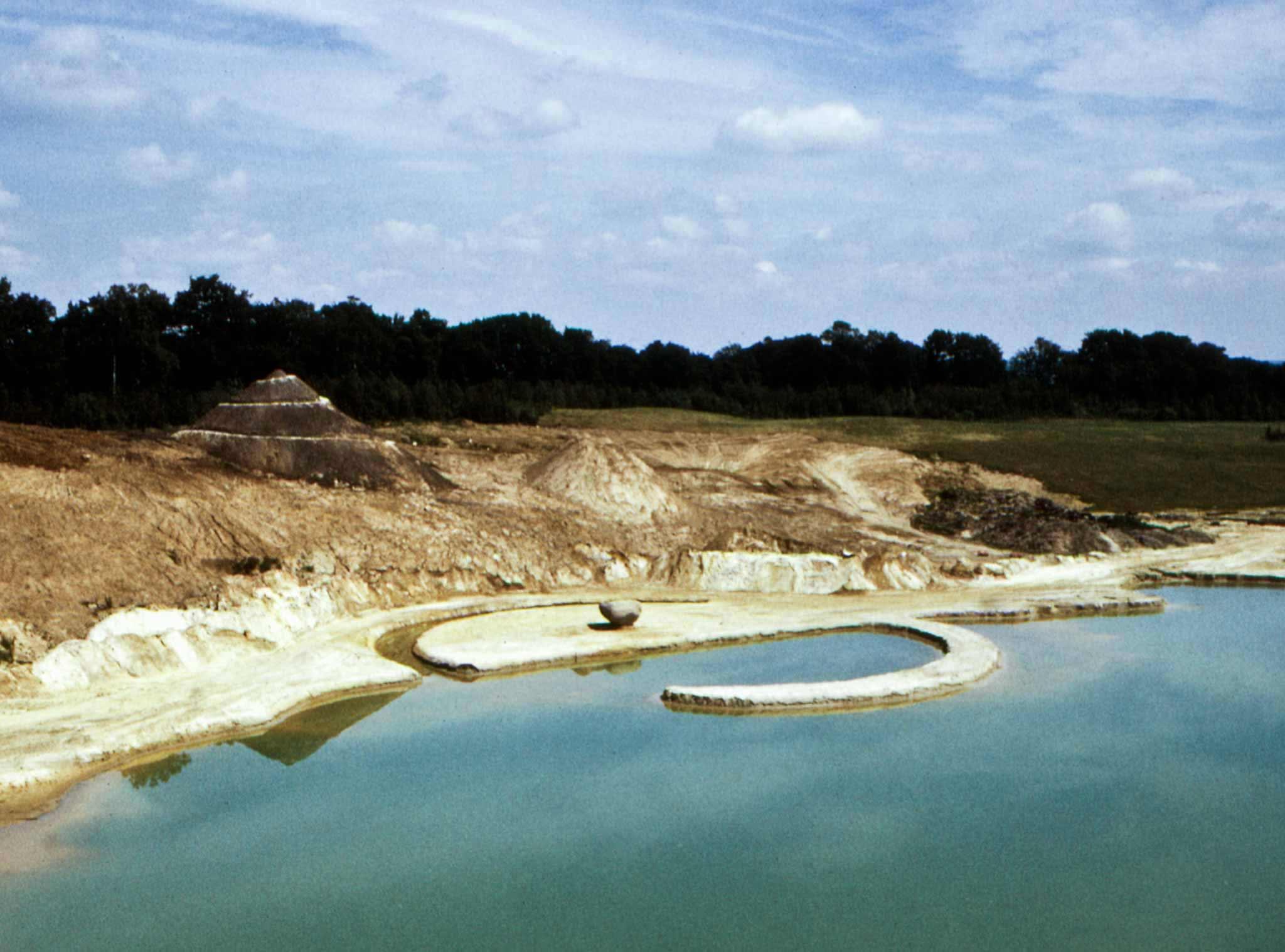
Robert Smithson, Broken Circle/SpiralHill (1971)
Emmen, The Netherlands
Broken Circle
Water, sand, and boulder
Diameter: 140 ft. (42.6 m); canal: 12 ft. (3.6 m) wide, 10-15 ft. (3-4.5 m) deep
Spiral Hill
Earth, topsoil, sand
Diameter: 75 ft. (22.9 m) at base
Photograph: Robert Smithson
© Holt/Smithson Foundation / Licensed by Artists Rights Society, New York
Broken Circle shortly after completion in 1971.
Robert Smithson, Broken Circle (1971)
Emmen, The Netherlands
Water, sand, and boulder
Diameter: 140 ft. (42.6 m); canal: 12 ft. (3.6 m) wide, 10-15 ft. (3-4.5 m) deep
Photograph: Robert Smithson
© Holt/Smithson Foundation / Licensed by Artists Rights Society, New York
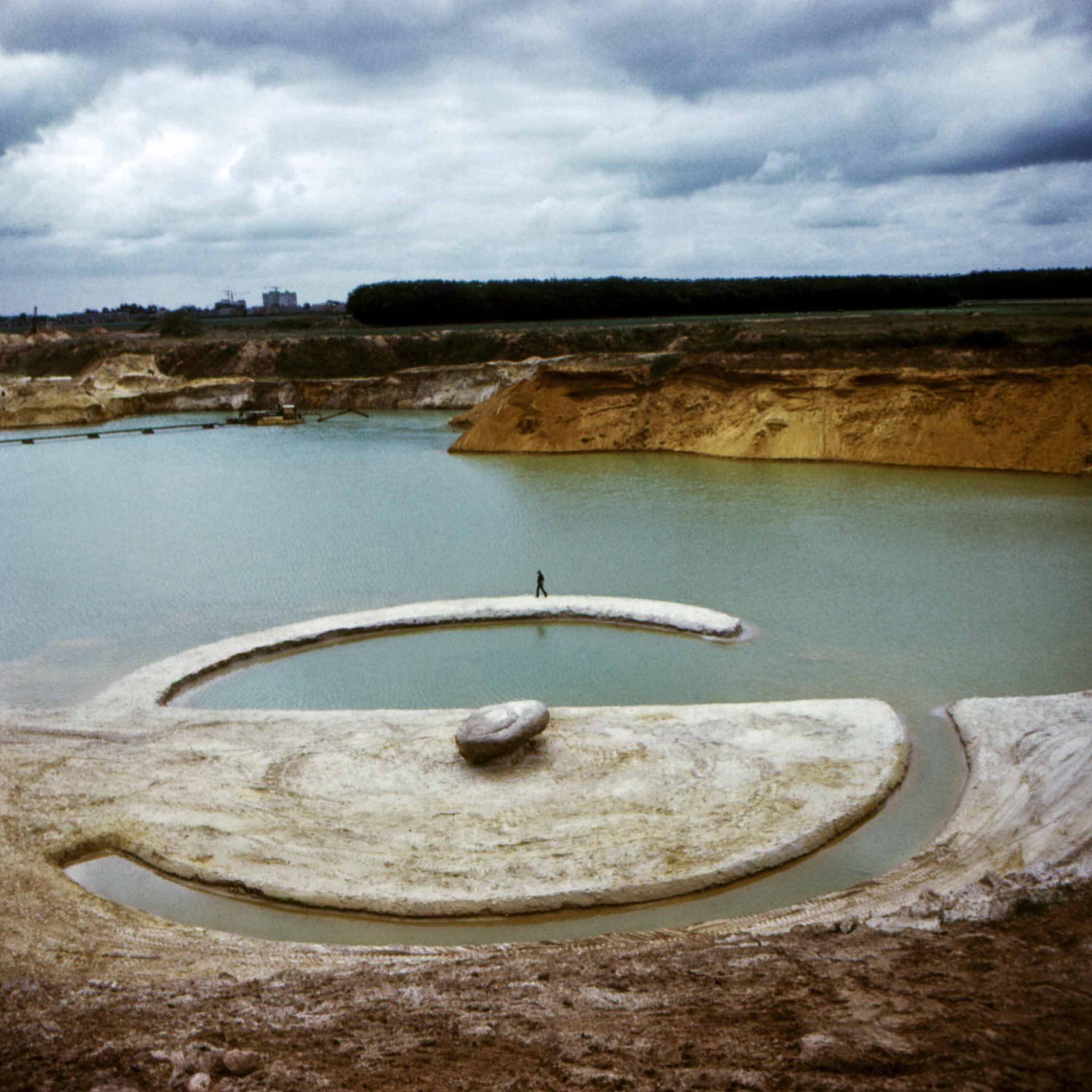
Broken Circle shortly after completion in 1971.
Robert Smithson, Broken Circle (1971)
Emmen, The Netherlands
Water, sand, and boulder
Diameter: 140 ft. (42.6 m); canal: 12 ft. (3.6 m) wide, 10-15 ft. (3-4.5 m) deep
Photograph: Robert Smithson
© Holt/Smithson Foundation / Licensed by Artists Rights Society, New York
Spiral Hill shortly after completion in 1971.
Robert Smithson, Spiral Hill (1971)
Emmen, The Netherlands
Earth, topsoil, sand
Diameter: 75 ft. (22.9 m) at base
Photograph: Robert Smithson
© Holt/Smithson Foundation / Licensed by Artists Rights Society, New York
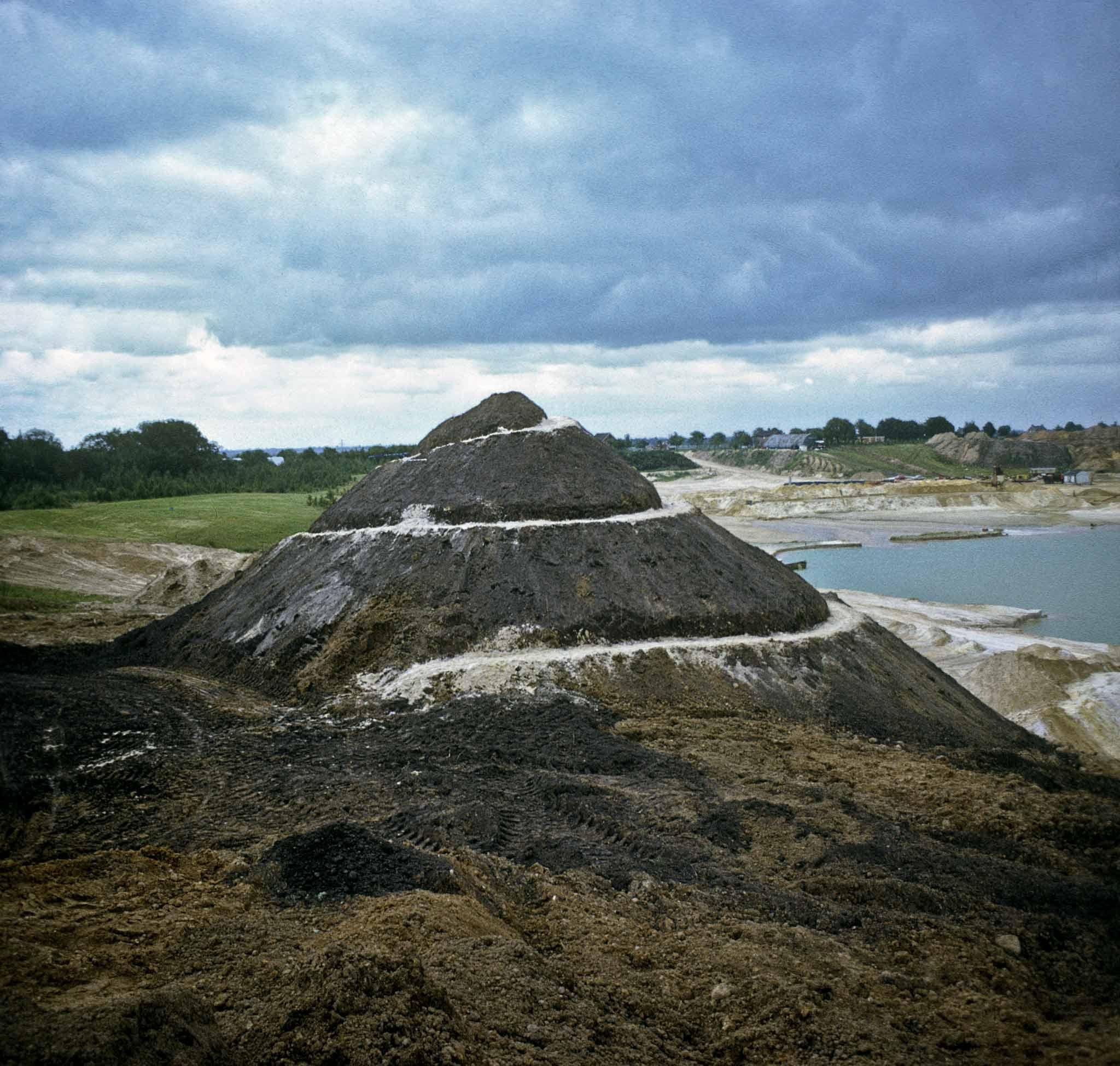
Spiral Hill shortly after completion in 1971.
Robert Smithson, Spiral Hill (1971)
Emmen, The Netherlands
Earth, topsoil, sand
Diameter: 75 ft. (22.9 m) at base
Photograph: Robert Smithson
© Holt/Smithson Foundation / Licensed by Artists Rights Society, New York
Broken Circle during construction, 1971.
Robert Smithson, Broken Circle (1971)
Emmen, The Netherlands
Water, sand, and boulder
Diameter: 140 ft. (42.6 m); canal: 12 ft. (3.6 m) wide, 10-15 ft. (3-4.5 m) deep
Photograph: Robert Smithson
© Holt/Smithson Foundation / Licensed by Artists Rights Society, New York
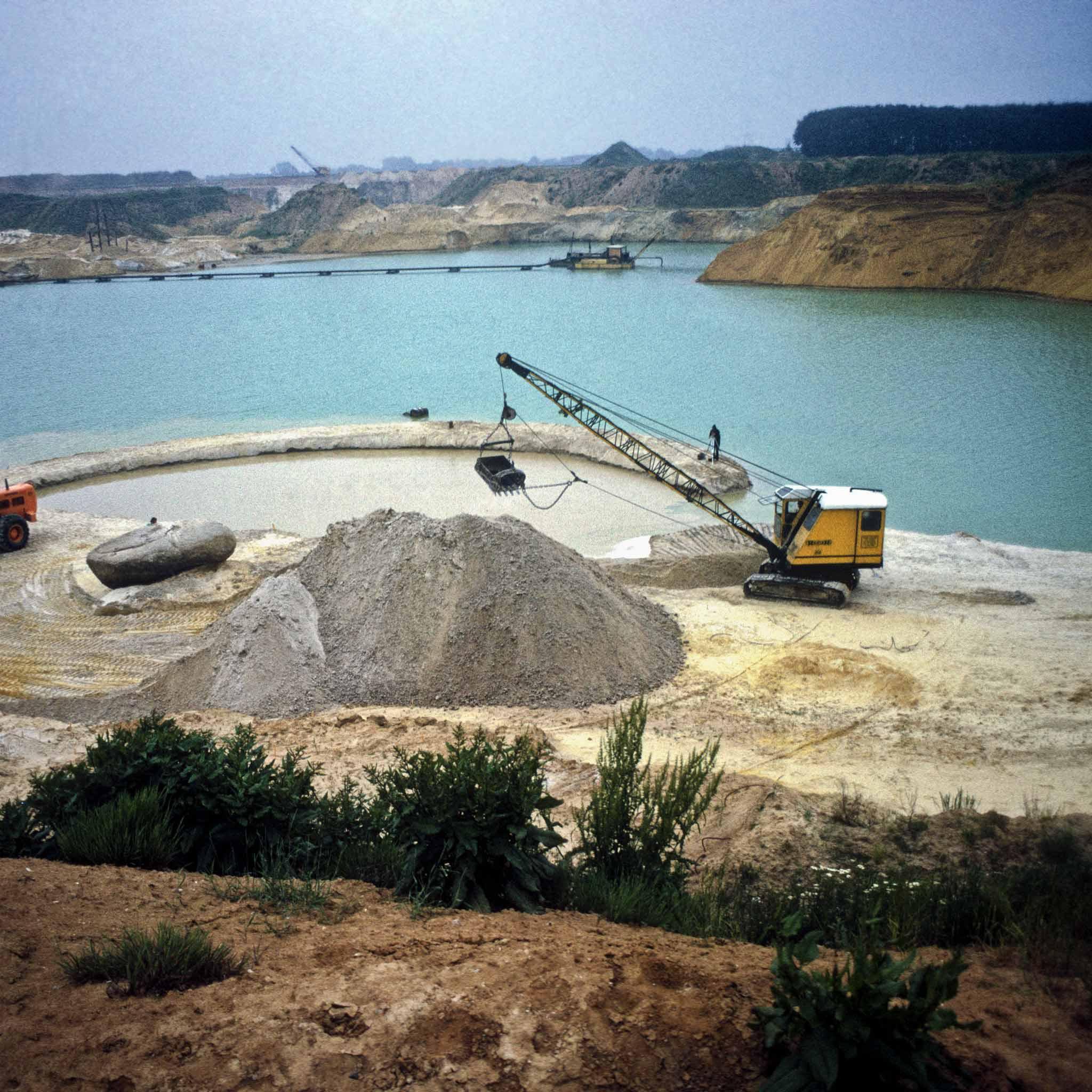
Broken Circle during construction, 1971.
Robert Smithson, Broken Circle (1971)
Emmen, The Netherlands
Water, sand, and boulder
Diameter: 140 ft. (42.6 m); canal: 12 ft. (3.6 m) wide, 10-15 ft. (3-4.5 m) deep
Photograph: Robert Smithson
© Holt/Smithson Foundation / Licensed by Artists Rights Society, New York
A video still from the film Breaking Ground: Broken Circle/Spiral Hill (1971-2011) showing Broken Circle under construction.
Still from Nancy Holt and Robert Smithson, Breaking Ground: Broken Circle/Spiral Hill (1971-2011)
Color, sound
Duration: 20:45 min
Film footage: Nancy Holt (1971), Benito Strangio (2011)
Photograph: Nancy Holt
© Holt/Smithson Foundation / Licensed by Artists Rights Society, New York

A video still from the film Breaking Ground: Broken Circle/Spiral Hill (1971-2011) showing Broken Circle under construction.
Still from Nancy Holt and Robert Smithson, Breaking Ground: Broken Circle/Spiral Hill (1971-2011)
Color, sound
Duration: 20:45 min
Film footage: Nancy Holt (1971), Benito Strangio (2011)
Photograph: Nancy Holt
© Holt/Smithson Foundation / Licensed by Artists Rights Society, New York
A video still from the film Breaking Ground: Broken Circle/Spiral Hill (1971-2011) .
Still from Nancy Holt and Robert Smithson, Breaking Ground: Broken Circle/Spiral Hill (1971-2011)
Color, sound
Duration: 20:45 min
Film footage: Nancy Holt (1971), Benito Strangio (2011)
Photograph: Benito Strangio
© Holt/Smithson Foundation / Licensed by Artists Rights Society, New York

A video still from the film Breaking Ground: Broken Circle/Spiral Hill (1971-2011) .
Still from Nancy Holt and Robert Smithson, Breaking Ground: Broken Circle/Spiral Hill (1971-2011)
Color, sound
Duration: 20:45 min
Film footage: Nancy Holt (1971), Benito Strangio (2011)
Photograph: Benito Strangio
© Holt/Smithson Foundation / Licensed by Artists Rights Society, New York
A photograph of Spiral Hill in 2011.
Robert Smithson, Spiral Hill (1971)
Emmen, The Netherlands
Earth, topsoil, sand
Diameter: 75 ft. (22.9 m) at base
© Holt/Smithson Foundation / Licensed by Artists Rights Society, New York
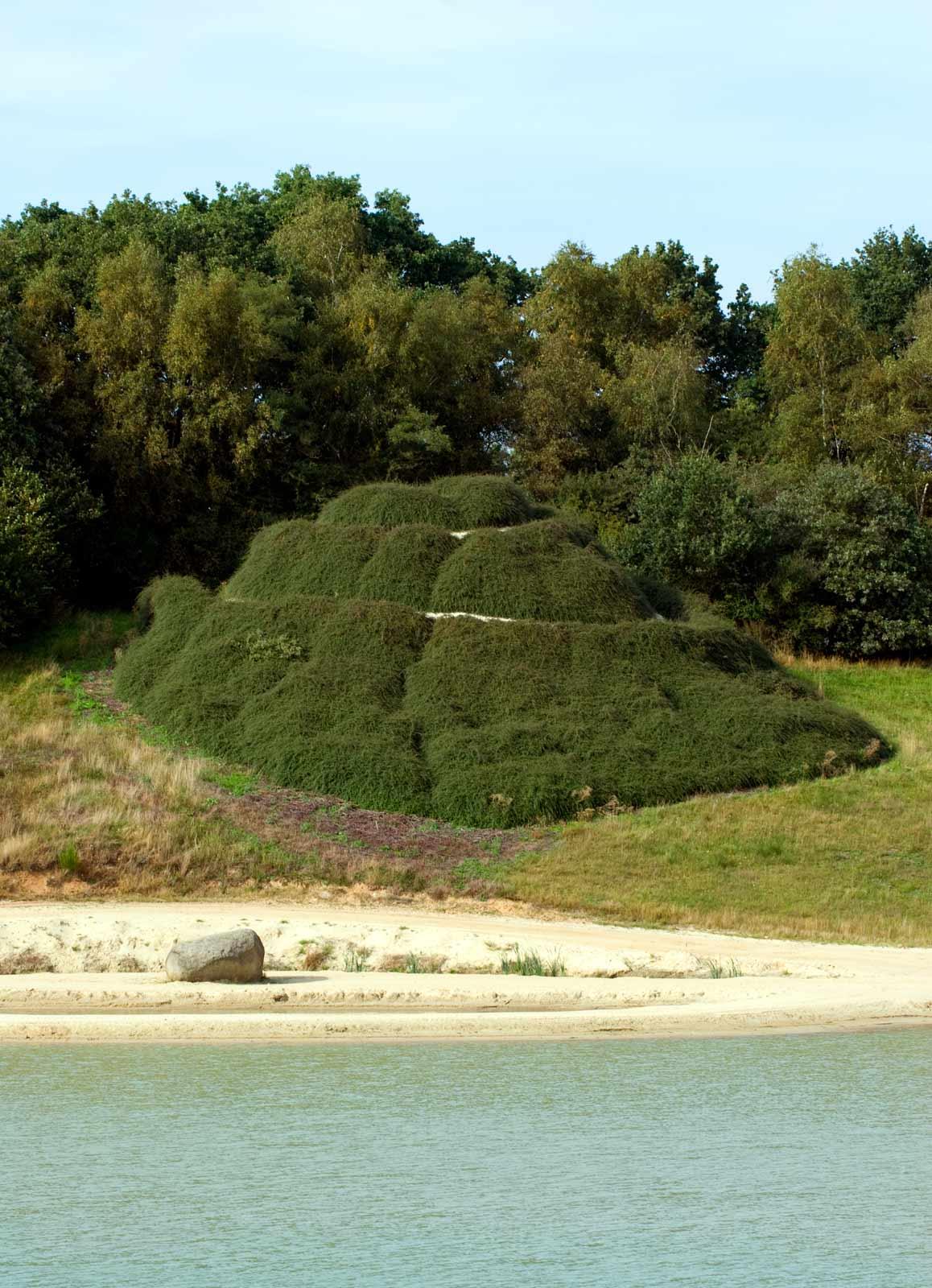
A photograph of Spiral Hill in 2011.
Robert Smithson, Spiral Hill (1971)
Emmen, The Netherlands
Earth, topsoil, sand
Diameter: 75 ft. (22.9 m) at base
© Holt/Smithson Foundation / Licensed by Artists Rights Society, New York
A winter photograph of Broken Circle/Spiral Hill, ca. 1980
Robert Smithson, Broken Circle/Spiral Hill (1971)
Emmen, The Netherlands
Photograph: Gerard de Boer
© Holt/Smithson Foundation / Licensed by Artists Rights Society, New York
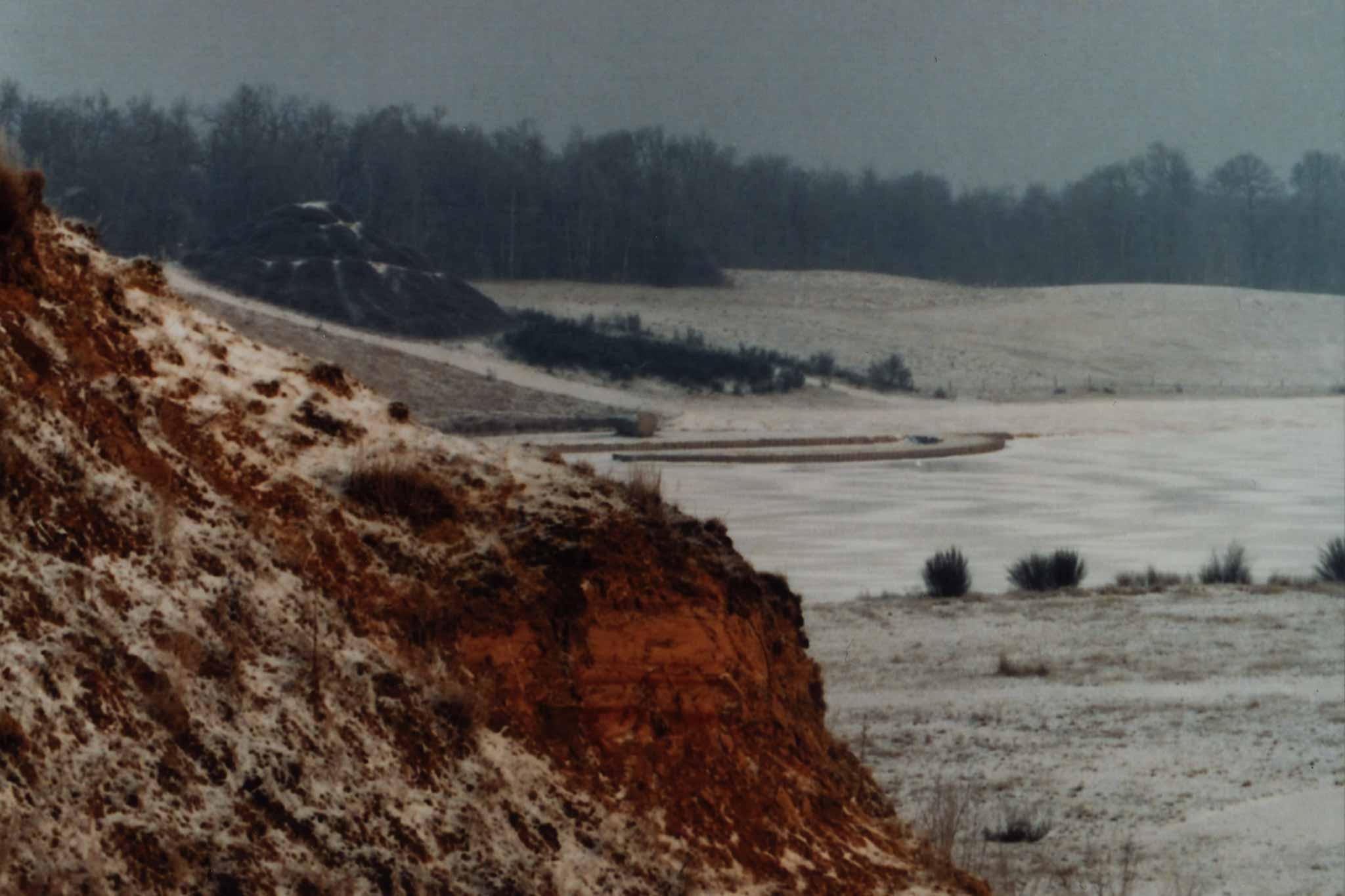
A winter photograph of Broken Circle/Spiral Hill, ca. 1980
Robert Smithson, Broken Circle/Spiral Hill (1971)
Emmen, The Netherlands
Photograph: Gerard de Boer
© Holt/Smithson Foundation / Licensed by Artists Rights Society, New York
A view of Broken Circle, ca. 1980.
Robert Smithson, Broken Circle (1971)
Emmen, The Netherlands
Photograph: Yuan Bourdon
© Holt/Smithson Foundation / Licensed by Artists Rights Society, New York
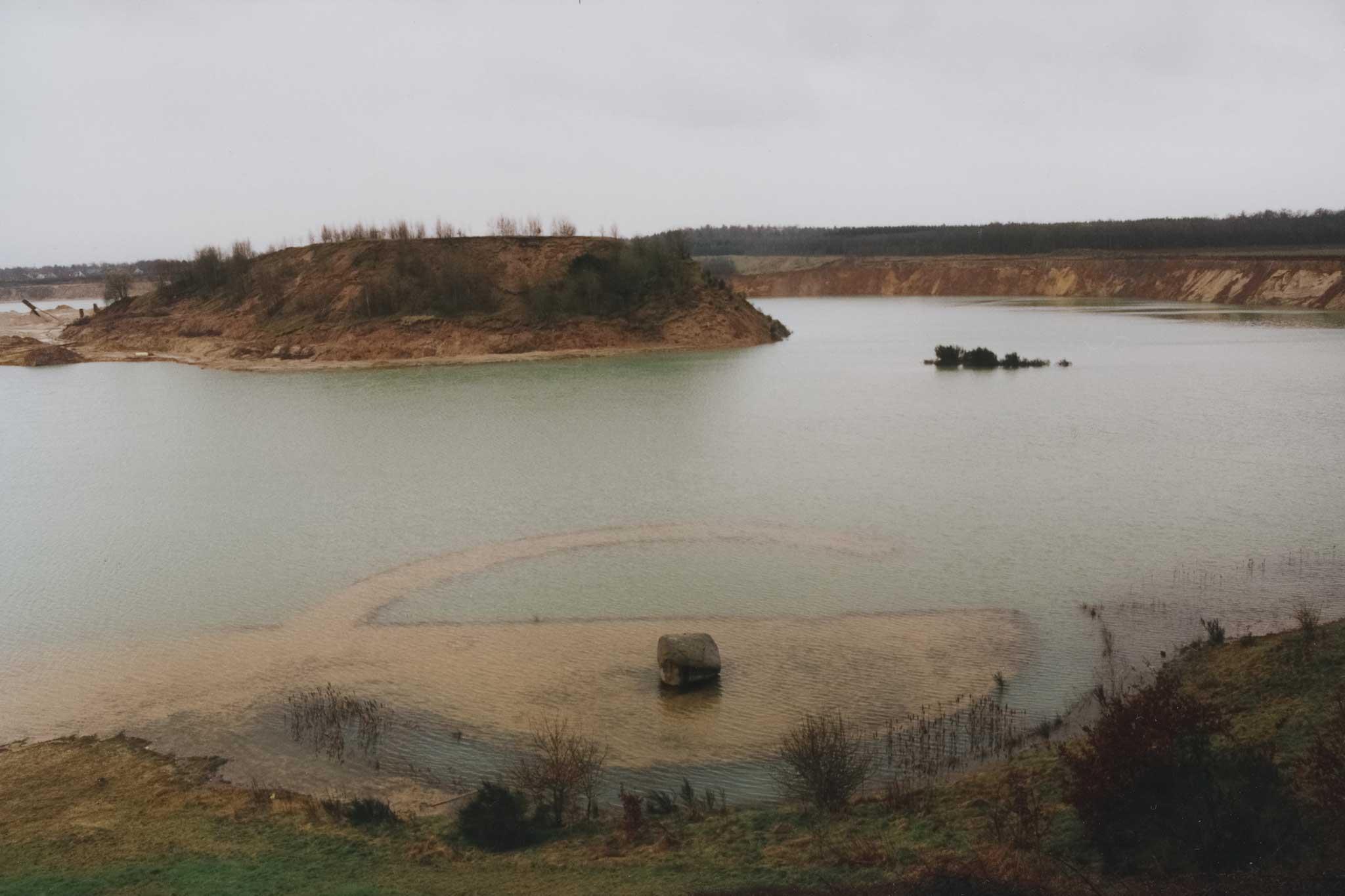
A view of Broken Circle, ca. 1980.
Robert Smithson, Broken Circle (1971)
Emmen, The Netherlands
Photograph: Yuan Bourdon
© Holt/Smithson Foundation / Licensed by Artists Rights Society, New York
In a sand quarry in the Northeastern Netherlands, Smithson has carved into the shoreline, flooding the resulting dikes to form an interlocking canal and jetty. At the sculpture’s center lies a single glacial boulder, while the hillside above features a winding spiral path—a manifestation of Smithson’s fascination with spirals and their elusive promise of a final destination. The work iterates the irreversible impact of industry—the land can never go back to what it was before—yet its hypnotizing beauty calls for a reevaluation of the relationship between nature and construction.
In 2025 the Province of Drenthe in the Netherlands designated the artwork Broken Circle/Spiral Hill by Robert Smithson as a provincial monument. This marks the development of a sustainable future for this world-renowned artwork in Emmen, the Netherlands. Learn more about this historic announcement here. In 2025-26 Land Art Contemporary and DIEP will organize a series of bus excursions to visit Robert Smithson's Broken Circle/Spiral Hill (1971)—learn more and get tickets to visit Broken Circle/Spiral Hill.

“This is a major work, I want to have good reproductions in magazines. I want the piece to remain forever. Please help!”
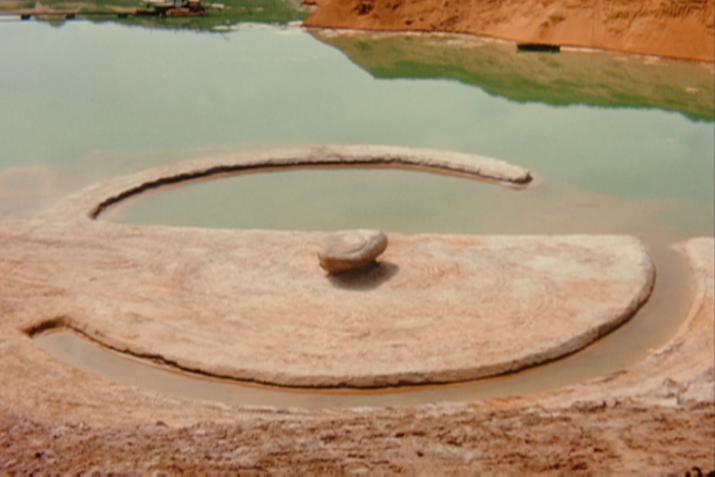
Across the country there are many mining areas, disused quarries, and polluted lakes and rivers. One practical solution for the utilization of such devastated places would be land and water recycling in terms of “Earth Art.” Recently, when I was in Holland, I worked in a sand quarry that was slated for redevelopment. The Dutch are especially aware of the physical landscape. A dialectic between land reclamation and mining usage must be established. The artist and the miner must become conscious of themselves as natural agents. In effect, this extends to all kinds of mining and building. When the miner or builder loses sight of what he is doing through the abstractions of technology he cannot practically cope with necessity. The world needs coal and highways, but we do not need the results of strip-mining or Highway trusts. Economics, when abstracted from the world, is blind to natural processes. Art can become a resource, that mediates between the ecologist and the industrialist.